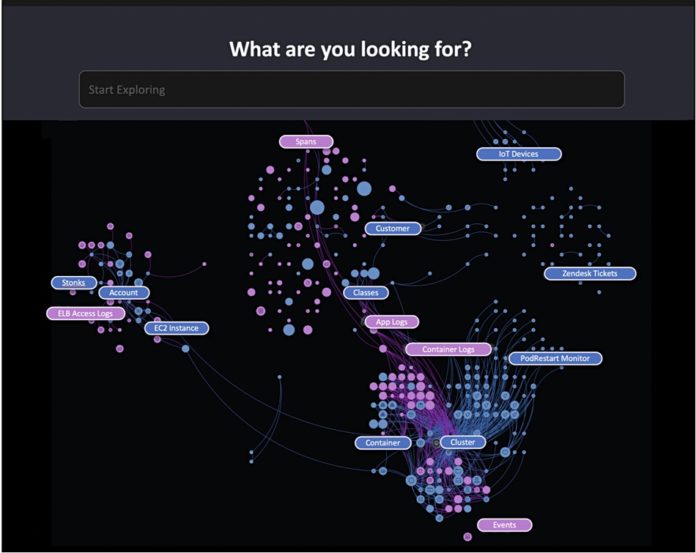Startup Observe has raised $70 million to fund its growth as an analyzer of machine data that can make it intelligible to admin staff.
CEO Jeremy Burton told us Observe’s software transforms raw log events and metrics into entities that make sense to site reliability engineers (SREs) such as containers, pods, EC2 instances, customers, shopping carts, and S3 buckets, and the relationships between them.
In a statement, he said: “Observe has taken a unique, data-centric, approach to observability and is starting to deliver tangible business and cost benefits for almost 50 customers.”
Background
The company was founded in 2017 by Mike Speiser of Sutter Hill Ventures (SHV), not by software technologists as is the case for the vast majority of cloud-native software and storage software startups. Instead there was a VC-first model. SHV then recruited a founding team who had experience dealing with vast quantities of data.
VP engineering Jacob Leverich joined from Splunk, Jonathan Trevor from Wavefront, Jon Watte from Roblox, and core platform team manager and director of European Operations Philip Unterbrunner from Snowflake – via Facebook.
Burton became CEO in November 2018 and Keith Butler joined as head of sales from Perfecto in 2020. Observe raised a $35 million A-round in 2020 followed by a $7 million venture round in 2021. With this $70 million round funding from from Sutter Hill Ventures (SHV), Capital One Ventures, and Madrona Ventures, the total raised is $114.5 million.
Jaidev Shergill, managing partner at Capital One Ventures, said: “Observe is tackling a huge problem that site reliability engineers face – organizing and visualizing data from distributed sources to detect and resolve system stability issues.”
Next steps
Observe says it’s focused on a segment of the infrastructure market called observability which could supplant the $20 billion-plus market for log analytics, infrastructure monitoring, and application performance management.
Burton told us: “We mainly ingest semi-structured JSON data (logs or traces)… and time-series data. The data I would describe as ‘digital exhaust fumes’ from infrastructure and applications – it’s all machine-generated and typically only understandable by machines.
“We pick it apart and assemble into something humans can understand so they can troubleshoot their apps or infra when things go wrong. Think of it more like putting Splunk in a blender with DataDog and New Relic… and storing all of the data in Snowflake.”

Observe claims it has expanded its customer base over 3x and its monthly active users (MAUs) over 5x in the past 12 months. Customers now send Observe over 40TB of data each day and users execute over 25 million queries each day, scanning almost one trillion rows on over 10PB of data.
New features
The company recently announced a Data Universe Maps feature whereby SREs can explore visualizations of all the datasets Observe manages and the relationships between them. Context-sensitive dashboards provide users with a single pane of glass to view the overall health of their system and enable them to drill down into underlying event data to begin an investigation.
Observe already has a Teleport feature that inspects the relationships across the data and returns logs for the subset of jobs it inspects. The cleaned-up data then diagnoses, analyzes, and fixes Kubernetes infrastructure problems. This is similar to what Israeli startup Komodor is doing with its software.
Other new Observe dashboards make its usage-based pricing model more transparent, the company said. Admins can see exactly how many Observe credits users consume each day, and by whom, and view the datasets and monitors responsible for the most consumption.

Observe apps allow users to hook their data up to Observe and also feature pre-built dashboards and alerts so users can become productive more quickly. There are several new pre-built apps for Kubernetes, AWS, and Jenkins, with GCP and Azure coming later this year.
Observe also introduced “Practical Observability” – an online course produced by Knox Lively. Practical Observability is free and aimed at clearing up the confusion around what observability is, why it’s important, and the tools needed.
Read an Observe blog for more funding round background.








